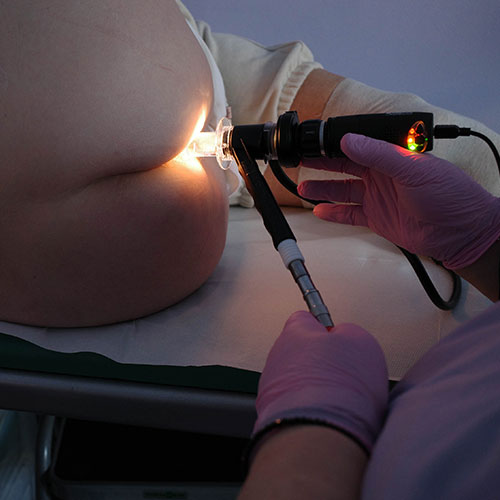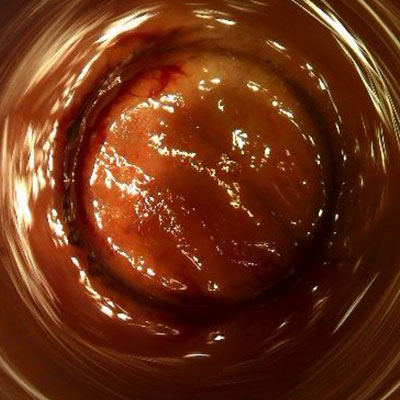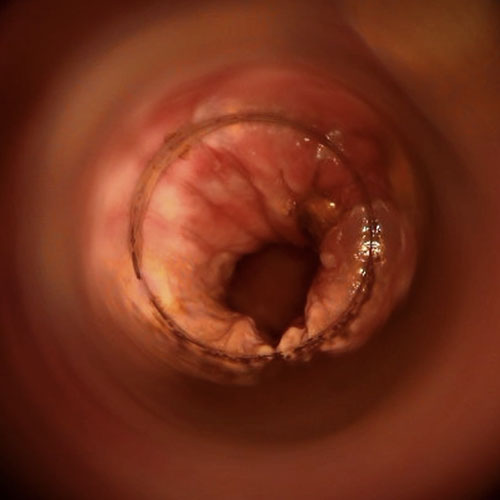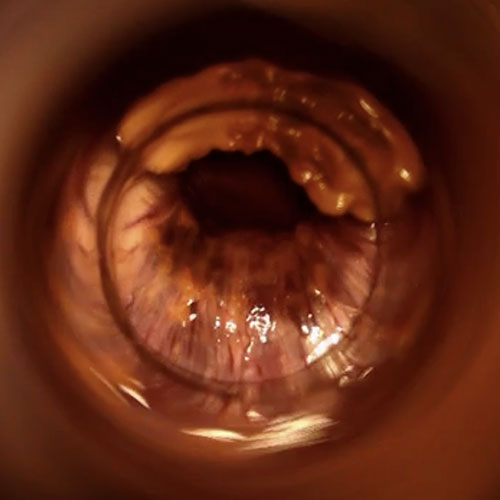
Technological development in medicine is a prerequisite for increasing both the ability to diagnose and the ability to treat, and it is inextricably linked to research, experimentation, and, no less, the ever-increasing need on the part of the health care market for effective and quality care.
In Proctology, i.e., the branch of Medicine that exclusively studies and treats diseases of the anorectal canal, technical development has always brought great developments and advantages, not only in the treatment of diseases of the rectum and anus, but in general, to the whole medical art.
In recent times, there is a test that has totally changed the diagnostic approach of the proctologic examination, which has become, at present, the de facto standard for every Proctology Physician who wants to deliver high-level diagnoses with the highest possible accuracy.
It is Electronic Endoscopic Videoproctoscopy: a completely digital, noninvasive, and painless examination used to inspect the anorectal canal with great accuracy.
Find out what it is and all the benefits it brings to this modern, now indispensable exam that optimally complements every proctological examination.
WHAT IS THE PROCTOSCOPY EXAMINATION?

Proctoscopy¬†(from Greek ŌÄŌĀŌČőļŌĄŌĆŌā, “anus,” and ŌÉŌįőŅŌÄőģ skop√™, “observation”) is a¬†specialized endoscopic examinationthat aims to visually investigate the¬†anorectal canal.
In contrast to colonoscopy, whose task is to investigate the entire colon, from theanal orifice to the cecum, proctoscopy has a deliberately limited area: from the anal orifice to the end of the rectum, that is, therectal ampulla, before the sigma.
This sectional nature of the examination brings with it the advantages ofnoninvasive investigation for the patient, who is thus spared the (mandatory) preparation for colonoscopy, which is often perceived as decidedly unpleasant.
Proctoscopy requires an inspection tube (proctoscope) with a length of about 120-130mm: a sufficient size to reach the rectal ampulla to thus have a full view of the rectum.
Proctoscopy is performed in two possible ways: conventionally, with an optical proctoscope, or more modernly, with a proctoscope connected to a high-definition camera.
In the latter case, the examination is more properly called videoproctoscopy.
WHAT IS ELECTRONIC ENDOSCOPIC VIDEOPROCTOSCOPY?

Electronic Endoscopic Videoproctoscopy is the evolution of normal proctoscopy performed with a common proctoscope, and for the past few years it has almost totally supplanted, at least in high-end practices particularly concerned with diagnostic accuracy, the traditional examination.
It is performed with a special proctoscopic tube about 130mm in diameter, to which is attached a control handpiece, which in turn is joined to a high-definition video camera (at least 1080p, but recent cameras can go up to 4K definition).
In addition to the video camera, the handpiece also has specific attachments for an air insufflator and a light source, which is essential to properly illuminate the entire anorectal canal.
The images taken by the video camera are screen-printed live, and the operator then sees on the monitor, magnified about 20X, the entire anus and rectum.
This, combined withsuitable lighting (usually, surgical light sources are used, not unlike those used for laparoscopic surgeries), allows a perfect view of the entire ano-rectal canal, thus identifying even microscopic lesions that are impossible to see with the naked eye with a normal proctoscope.
The videoproctoscopy examination is totally digital: the video of the inspection is recorded on electronic media, and digitally catalogued by the physician for any future reference.
All modern videoproscopes also allow images of the video(frame) to be taken, perhaps judged clinically interesting by the Physician, which can be printed in the paper report or included in the digital report.
This process, borrowed from video colonoscopy, makes the examination irreplaceable for the Physician, who can therefore catalog and review it as many times as he or she wishes, even possibly comparing it with future examinations.
WHAT CAN BE DIAGNOSED WITH ELECTRONIC ENDOSCOPIC VIDEOPROCTOSCOPY?

Electronic Endoscopic Videoproctoscopy is indicated for the diagnosis of all anorectal pathologies, including:
- Pathologic hemorrhoids;
- Anal fissure;
- Proctitis and anitis;
- Anal or rectal polyps;
- Anal chondylomas;
- Scars or exuded tissue outcome of previous surgeries;
- Anal fistulas
In general, with videoproctoscopic examination it is possible to have an almost complete picture of the entire rectum and anus, so any pathology that from visible symptoms can be diagnosed.
Modern Electronic Endoscopic Videoproctoscopy is performed, in high-end medical offices, not unlike a videocolonoscopy.
The handpiece of the proctoscope differs from that of the colonoscope in the absence of the operating elements(forceps, scissors, and whatnot), but it is essentially very similar.
The substantial difference, other than the depth of inspection(complete in colonoscopy and only partial in videoproctoscopy) is that the image is captured by means of a video camera that directly exploits the transparency of the proctoscope (and its light scattering) to capture the images, and bring them back to the screen.
The result is a high-precision, totally digitalexamination, with which the physician can go and view every minute detail, directly on the monitor, magnified about 20 times (even more, in the case of high-definition monitors).
WHAT ARE THE ADVANTAGES OF VIDEOPROCTOSCOPY OVER TRADITIONAL RECTOSCOPY?

Electronic Endoscopic Videoproctoscopy has many advantages over traditional rectoscopy, performed with the optical rectoscope.
There are so many advantages that, in the modern diagnosis of proctologic diseases, videoproctoscopy has supplanted the use of the rectoscope or optical anoscope altogether, at least for Doctors and high-level medical practices.
Among the main diagnostic advantages of videoproctoscopy, we can certainly include:
- Absence of any pre-examination preparation, since videoproctoscopy is performed with any condition of the bowel, even with a full rectal ampulla (thus, before having defecated);
- Highdiagnostic accuracy, guaranteed by high-resolution video inspection, performed with a camera capable of magnifying every minute detail of the anorectal canal;
- Possibility to inspect even millimeter lesions, thanks to the high definition of the camera that allows the Physician to notice any kind of abnormality of the ano-rectal canal;
- Possibility of recording the film of the examination and the photographic shots during the same, which clearly and unequivocally explain to the patient his real state of condition, involving him directly;
- Fully digital archiving, and possibility of reviewing the examination (including for comparison) an indefinite number of times;
- Possibility of repeating the examination several times even at close range, without any kind of preparation for the patient;
- Absence of any pain during the examination;
- Possibility to accurately measure any lesions of the anorectal canal, in direct intake during the examination;
- Specific design for the ano-rectal canal and not for the entire bowel, which hyper-focuses videoproctoscopy in detail, and makes it different in this from the general examination of videocolonoscopy
These reasons make videoproctoscopy a now indispensable examination for any senior Proctology Physician, both for diagnosis of diseases and to ascertain the patient's actual recovery after medical therapies or surgeries.
Modern Electronic Endoscopic Videoproscopy is performed, in high-end medical offices, not unlike a videocolonoscopy.
The handpiece of the proctoscope differs from that of the colonoscope in the absence of the operating elements (forceps, scissors, and whatnot), but it is essentially very similar.
The substantial difference, other than the depth of inspection(complete in colonoscopy and only partial in videoproctoscopy) is that the image is captured by means of a video camera that directly exploits the transparency of the proctoscope (and its light scattering) to capture the images, and bring them back on screen.
The result is a high-precision, totally digitalexamination, with which the physician can go and view every minute detail, directly on the monitor, magnified about 20 times (even more, in the case of high-definition monitors).
SO CAN ELECTRONIC ENDOSCOPIC VIDEOPROCTOSCOPY BE AN ALTERNATIVE TO COLONOSCOPY?

No: the two examinations, although they share video inspection, have different purposes.
Colonoscopy is a complete examination of the entire colon, so anus, rectum, sigma, descending colon, transverse colon, ascending colon, and cecum, that is, the very last part of the ascending colon, down to thevermiform appendix.
Videoproctoscopy, on the other hand, is an examination hyper-localized to the anus and rectum, which is therefore only diagnostically valid for the very last part of the intestine.
Colonoscopy is prescribed when one needs to investigate just the entire colon, looking (for example) for polyps, possible tumors, autoimmune inflammation, inflamed diverticula, lesions of any kind in the bowel wall, etc.
Colonoscopy, on the other hand, is unnecessarily wasteful, costly and tiring for the patient when one has to go and investigate only the rectum and anus, looking for, for example, pathological hemorrhoids, fistulas or anal fissures.
These are all pathologies that cannot go beyond the rectum, which therefore do not require all the (often extremely troublesome) bowel cleansing preparation that colonoscopy requires instead.
This is why the two examinations have different purposes of investigation, and should not be confused with each other.
IS ELECTRONIC ENDOSCOPIC VIDEOPROCTOSCOPY PAINFUL?

Absolutely not.
The examination is completely painless, and is performed without preparation or anesthesia.
The only sensation experienced by the patient is the (totally bearable) sensation caused by the insufflation of air into the anorectal canal, which is necessary to stretch the lumen of the canal well.
The examination can be performed at any time, even if you have not yet gone to the toilet, and allows immediate discharge, without an observation period.
IS ELECTRONIC ENDOSCOPIC VIDEOPROCTOSCOPY AN INVASIVE EXAM?

No, the examination is noninvasive and does not involve prior preparation.
The patient does not feel any pain: the proctoscopic tube, which is very small in diameter anyway, and inserted into the rectum gently by the Doctor, with the help of a lidocaine anesthetic cream.
The Doctor makes the examination even more gentle by means of specific, easy-to-implement breathing cues that the patient will be required to perform during insertion of the proctoscope.
Such techniques relax the sphincter muscles to make the examination absolutely painless.
DO YOU SUFFER FROM A PROCTOLOGICAL PROBLEM IN dubai? PUT YOUR TRUST IN DR. LUISELLA TROYER

Dr. Luisella Troyer is a Proctologist Doctor, with many years of experience in the study and treatment of all diseases of the anorectal canal.
In her clinic in Dubai, Dr. Troyer uses, as a complement to each proctological examination, a modern, totally digital videoproctoscope, with high-definition video camera, capable of recording on electronic video support of the entire inspection.
An indispensable examination to increase diagnostic accuracy especially in case of even microscopic lesions (such asanal condylomata), useful for the Physician to prepare the right therapy, even surgical, with detailed mapping of the entire anorectal canal.
The videoproctoscopy examination performed by Dr. is completely painless, and requires no preoperative preparation.
Technological development in medicine is a prerequisite for increasing both the ability to diagnose and the ability to treat, and it is linked inseparably to research, experimentation, and, no less, to the ever-increasing need on the part of the health care market for effective and quality care.
In Proctology, i.e., the branch of Medicine that exclusively studies and treats diseases of the anorectal canal, technical development has always brought great developments and advantages, not only in the treatment of diseases of the rectum and anus, but in general, to the whole medical art.
your proctologist surgeon of excellence in Dubai

Dr. Luisella Troyer is an italian Vascular Surgeon, specialised in Proctology and Colonproctology, operating in Dubai.
In the modern, well-equipped clinic in Dubai, Dr. Troyer provides specialist medical examinations in Vascular Surgery and Colonproctology, to diagnose and solve proctological problems such as:
- Pathological haemorrhoids;
- Haemorrhoidal thrombus;
- Anal fissures;
- Anal warts;
- Peri-anal abscesses and anal fistulas;
- Chronic constipation;
- Irritable Bowel Syndrome;
- Faecal incontinence;
- Rectocele;
- Descending perineum syndrome
In the clinic in Dubai, Dr. Troyer also performs minimally invasive treatments, such as the treatment of prolapsed haemorrhoids with the innovative sterilised air-stabilised scleromousse.
For her proctological diagnoses and examinations, Dr. Troyer uses the excellence of diagnostic technology, such as the modern high-definition videoproctoscope for Electronic Endoscopic Videoproctoscopy.
All operators and assistants of Dr. Troyer speak English, Arabic and Italian.
So remember...
- PROCTOSCOPY IS THE ENDOSCOPIC EXAMINATION OF THE ANAL AND RECTAL CANAL, INSPECTING FROM THEANAL ORIFICE TO THE ATTACHMENT OF THERECTAL AMPULLA;
- PROCTOSCOPY DIFFERS FROMANOSCOPY, WHICH IS ONLY INSPECTION OF THE ANUS AND SMALL ANAL CANAL INSTEAD;
- PROCTOSCOPY IS PERFORMED WITH AN INSTRUMENT KNOWN AS A PROCTOSCOPE, WHICH IS ABOUT 120-130MM LONG;
- THE PROCTOSCOPE CAN BE SIMPLE, I.E., OPTICAL, WITH AN INSPECTION WINDOW FOR THE DOCTOR, OR CONNECTED TO A VIDEO CAMERA;
- ELECTRONIC ENDOSCOPIC VIDEOPROCTOSCOPY IS PROCTOSCOPY PERFORMED WITH A PROCTOSCOPE CONNECTED TO A HIGH-DEFINITION VIDEO CAMERA THAT CAN CAPTURE AND RECORD IMAGES IN REAL TIME, SHOWING THEM ON THE SCREEN;
- VIDEOPROCTOSCOPY GREATLY INCREASES DIAGNOSTIC ACCURACY, BEING ABLE TO VISUALIZE AND MAGNIFY DETAILS IMPOSSIBLE TO SEE WITH THE COMMON PROCTOSCOPE;
- VIDEOPROCTOSCOPY SHOULD NOT BE CONFUSED WITH COLONOSCOPY, WHICH INSTEAD IS THE VIDEO EXAMINATION OF THE ENTIRE COLON;
- VIDEOPROCTOSCOPY REQUIRES NO PREOPERATIVE PREPARATION, AND CAN BE PERFORMED AND REPEATED AT ANY TIME;
- WITH VIDEOPROCTOSCOPY, FIRST-LEVEL HEMORRHOIDS, WHICH ARE INVISIBLE EXTERNALLY AND DIFFICULT TO DIAGNOSE WITH THE COMMON OPTICAL PROCTOSCOPE, CAN BE ACCURATELY DIAGNOSED;
- VIDEOPROCTOSCOPY IS ESSENTIAL TO CORRECTLY MAP ANORECTAL warts;
- FINISHED THE VIDEOPROCTOSCOPY EXAMINATION, THE PATIENT CAN GO HOME INDEPENDENTLY

This article was revised and updated by Dr. Luisella Troyer on:
Tuesday 4 February, 2025
Dr. Luisella Troyer is a Vascular Surgeon, specialising in Vascular Surgery and Proctology.
Since her training as a resident, Dr. Troyer has been interested in the study and treatment of proctological pathologies, especially haemorrhoids and haemorrhoid prolapses.
In the course of his practice as a Surgeon, he has accumulated about 5000 operating theatre hours as a first operator, of which about 120 were Milligan-Morgan haemorrhoidectomies.
He is one of the first Doctors to have studied and experimented with scleromousse therapy for pathological haemorrhoids, which he has judged to be the treatment of choice for the non-traumatic treatment of haemorrhoidal prolapses, with resolution statistics of over 95% and therefore often comparable with surgical access.

















